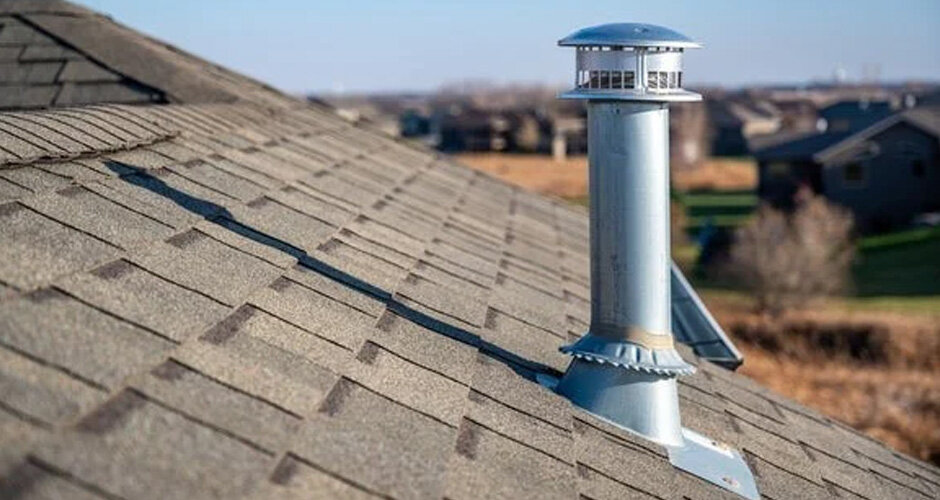When air escapes from a sewer vent pipe, it reassures the plumbing system that it is functioning correctly. The goal is not simply to prevent bad odours but also to provide safe, hygienic living conditions. Residential and commercial properties in Australia must have properly functioning plumbing systems that adhere to safety and environmental standards.
Understanding these regulations when planning new construction or upgrading an existing system is essential to avoid costly errors and ensure your property remains compliant.
What Are Sewer Vent Pipes?
Sewer vent pipes, or plumbing vent stacks, are integral to your plumbing system. They allow air to enter and exit the plumbing network, equalising pressure and ensuring that wastewater flows freely through your pipes. Vent pipes also prevent sewer gases from building up in your home, keeping your environment safe and odour-free.
Why Do Sewer Vent Pipe Regulations in Australia Matter?
Adhering to sewer vent pipe regulations in Australia is not just about following the law but protecting your property and the environment. These regulations are designed to:
- Prevent Health Hazards: Proper venting reduces the risk of sewer gas exposure, which can cause respiratory problems and other health issues.
- Ensure Efficient Plumbing: Vent pipes maintain the pressure balance within the plumbing system, reducing the likelihood of blockages or slow drains.
- Protect the Environment: Vent pipes minimise their impact on air quality by directing sewer gases safely into the atmosphere.
Key Sewer Vent Pipe Regulations in Australia
1. Proper Placement of Vent Pipes
Sewer vent pipes must be strategically placed to ensure the plumbing system functions efficiently. Regulations typically require:
- Vent Stack Placement: Vent pipes must extend vertically from the plumbing system and terminate safely above the roofline.
- Proximity to Fixtures: Vent pipes should be located close to fixtures to ensure proper air circulation and pressure equalisation.
Professional plumbers can ensure your vent pipes are installed in compliance with Australian standards.
2. Minimum Height Requirements
Regulations specify the minimum height at which vent pipes must terminate above the roof to prevent sewer gases from re-entering the building. In most cases, the vent pipe should extend at least 300mm above the roof’s highest point or adjacent windows.
This ensures that sewer gases are safely dispersed into the atmosphere, away from occupants and neighbouring properties.
3. Material Standards for Vent Pipes
The materials used for sewer vent pipes must meet Australian plumbing standards to ensure durability and safety. Common materials include:
- PVC (Polyvinyl Chloride): Lightweight, durable, and corrosion-resistant.
- Cast Iron: Known for its strength and longevity, it is often used in older or heavy-duty systems.
- Copper: Less common but suitable for specific applications requiring high heat resistance.
Using approved materials ensures the vent pipe can withstand environmental conditions and function effectively for years.
4. Vent Pipe Sizing
Proper sizing of vent pipes is critical for maintaining airflow and pressure balance. Regulations specify minimum diameters for vent pipes based on the size and complexity of the plumbing system. Undersized vent pipes can lead to slow drainage and sewer gas build-up, while oversized pipes may unnecessarily increase costs.
5. Compliance with AS/NZS 3500 Standards
Australian plumbing regulations, including those for sewer vent pipes, are governed by the AS/NZS 3500 Plumbing and Drainage Standards. These standards outline best practices for designing, installing, and maintaining plumbing systems.
Adhering to these standards ensures your plumbing system is safe, efficient, and compliant with Australian laws.

Common Issues with Sewer Vent Pipes
Even when installed correctly, sewer vent pipes can encounter problems over time. Some common issues include:
- Blockages: Debris, leaves, or nests can clog vent pipes, disrupting airflow and causing slow drainage.
- Leaks: Cracks or damage to the vent pipe can allow sewer gases to escape, creating unpleasant odours.
- Improper Installation: Vent pipes that don’t meet regulations can lead to system inefficiencies and potential fines.
If you suspect an issue with your sewer vent pipe, contact the experts at Ezy-Plumb for professional assessment and repair.
How to Ensure Compliance with Sewer Vent Pipe Regulations in Australia
Hire a Licensed Plumber
One of the most effective ways to ensure compliance is by hiring a licensed plumber with expertise in Australian regulations. Professional plumbers understand the intricacies of vent pipe placement, sizing, and materials, ensuring your system meets all requirements.
Regular Inspections and Maintenance
Even the best plumbing systems require periodic maintenance to remain compliant. Regular inspections can identify and address potential issues before they escalate.
Plan During Renovations or Upgrades
If you’re renovating or upgrading your plumbing system, take the opportunity to review your sewer vent pipes. This is particularly important for older properties that may not meet current standards.
FAQs About Sewer Vent Pipe Regulations in Australia
Do all plumbing systems need vent pipes?
Yes, vent pipes are mandatory for plumbing systems to maintain pressure balance and prevent sewer gases from entering the building.
Can I install a vent pipe myself?
No, vent pipes must be installed by a licensed plumber to ensure compliance with Australian regulations.
How do I know if my vent pipe is blocked?
Signs of a blocked vent pipe include slow drainage, gurgling noises from fixtures, and sewer odours in your home.
What happens if my vent pipe doesn’t meet regulations?
Non-compliance can result in fines, inefficient plumbing, and health hazards. Always ensure your system meets the required standards.
Understanding sewer vent pipe regulations in Australia is essential for ensuring a safe and compliant plumbing system, whether building a new home, upgrading your existing system or simply maintaining your property. Ezy-Plumb is committed to providing expert guidance and professional installation.
